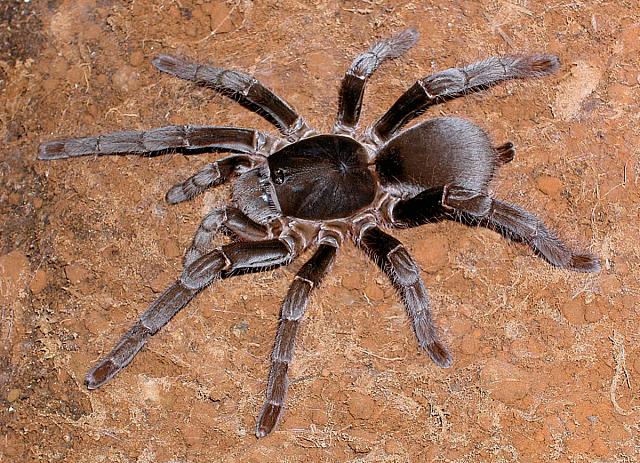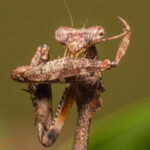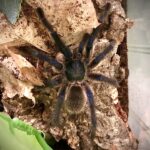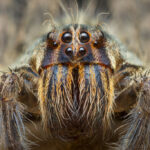Description
Giant Baboon Spider – Hysterocrates gigas (1.5-2cm) for Sale
Unsexed Spiderlings (1.5-2cm)
Giant Baboon Spider – Hysterocrates gigas
Hailing from the Cameroonian rainforest, this tarantula lives in its burrow on the forest floor.
To provide optimal conditions, this species should be kept at 22°C – 28°C with a humidity of between 65% – 85%.
from Wikipedia –
Hysterocrates gigas is a member of the tarantula family, Theraphosidae found in Cameroon. It is known as the giant baboon spider, Cameroon red baboon spider, or red baboon tarantula.
This is a burrowing spider and ranges in color from a dull black and gray to a rusty orange/brown. It is black when freshly moulted (post-moult) and turns brown just before a moult (pre-moult). Its eyes are small and weak and only able to judge light levels.
Its abdomen is oval in shape with a diameter up to 4 inches (10 cm). Although it has hairy legs, this tarantula is an Old World species and does not have urticating hairs on its abdomen. (Urticating hairs are hairs found in most new world species (those from North and South America) that can be shed in defence, they are barbed and may cause severe itching.)
It also has a leg span which may reach 8 inches (20 cm). This tarantula, in common with the rest of the family, has downward-facing, parallel fangs, used like pickaxes rather than pincers.
Adult males have smaller abdomens than females. Male pedipalps are club shaped, but it may take up to 4 years for differences between male and female to show, since the average male lifespan is about 4 years and the leg span of the male is roughly 5 inches (13 cm). These tarantulas spin very little silk – what silk they do spin is used for egg sacs or to line their burrows – they do not make webs. These tarantulas in particular burrow very intricate burrows.
Adaptations: These tarantulas are opportunistic, nocturnal hunters and will take whatever prey they find. The venom of these tarantulas is not medically significant, but may cause some nausea, though if the victim is abnormally sensitive medical attention may be required. Spider venom is normally intended for prey items though the spider will attack humans if provoked.
To defend themselves, they rear up aggressively on their hind legs in a threatening posture, smack their front legs on the ground and a sound comparable to the tearing of velcro can be produced by rubbing leg pairs I and II together. Although they may also bite, their main alternate defence is to run away. The name “tarantula” is commonly given to spiders in this family. It is a misnomer – it was originally given to a smaller wolf spider from Taranto, Italy, where, in the Middle Ages, people danced themselves into a trance – called the tarantella – in an attempt to purge the effects of the wolf spider’s bite.[citation needed]
These tarantulas moult by splitting of the old exoskeleton and wriggling out of it. They pull their legs out of their old skeletons as we pull our fingers out of gloves. A new exoskeleton has grown underneath and remains soft for about a week. The tarantula stretches his new skeleton to allow for growth space and the new skeleton hardens. During and after the molt, which may take hours to complete, the tarantula is weak and dehydrated. During this time the tarantula is lying on its back with its legs in the air, very vulnerable to other creatures – even some that would normally be its prey.
Fangs are part of the exoskeleton and are shed as well. The tarantula avoids eating for a week after to make sure that its new fangs have hardened. A lost limb may be fully or partially regenerated during a moult.
Other Tarantulas for Sale HERE





